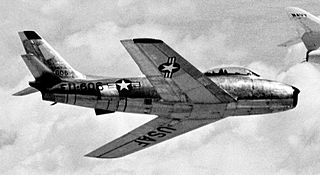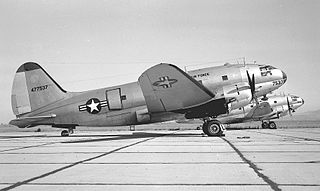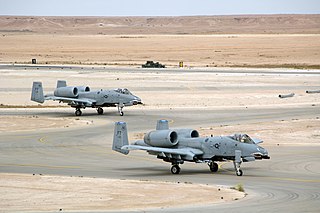
The 482nd Fighter Wing is an Air Reserve Component (ARC) unit of the United States Air Force. It is assigned to the Tenth Air Force, Air Force Reserve Command (AFRC), stationed at Homestead Air Reserve Base, Florida. If mobilized to active duty, the 482 FW is operationally gained by the Air Combat Command (ACC).

The 465th Bombardment Group is an inactive United States Air Force unit. It was last assigned to the 465th Troop Carrier Wing at Évreux-Fauville Air Base, France, where it was inactivated on 8 July 1957.

The 700th Airlift Squadron is part of the 94th Airlift Wing at Dobbins Air Reserve Base, Georgia. It operates Lockheed C-130 Hercules aircraft providing global airlift.

The 701st Airlift Squadron is part of the 315th Airlift Wing at Charleston Air Force Base, South Carolina. It operates Boeing C-17 Globemaster III aircraft providing global airlift.

The 445th Operations Group is the flying component of the 445th Airlift Wing, assigned to Fourth Air Force of the United States Air Force Reserve. The group is stationed at Wright-Patterson Air Force Base, Ohio.

The 446th Operations Group is a United States Air Force Reserve unit assigned to the 446th Airlift Wing. It is stationed at McChord Air Force Base, Washington.

The 448th Supply Chain Management Group is an inactive United States Air Force unit. Its last assignment was to the 448th Supply Chain Management Wing at Tinker Air Force Base, Texas, where it was inactivated on 30 June 2010.

The 319th Operations Group is a United States Air Force unit assigned to 319th Reconnaissance Wing, Air Combat Command. It is stationed at Grand Forks Air Force Base, North Dakota operating RQ-4 Global Hawk remotely piloted aircraft (RPA) in the intelligence, surveillance and reconnaissance (ISR) role.

The 325th Weapons Squadron is a United States Air Force unit assigned to the USAF Weapons School, stationed at Whiteman Air Force Base, Missouri, it is a geographically separated unit of the 57th Wing at Nellis Air Force Base, Nevada. The mission of the squadron is to provide Northrop Grumman B-2 Spirit instructional flying.

The 812th Fighter-Bomber Squadron is an inactive United States Air Force unit. Its last assignment was with 482d Fighter-Bomber Group stationed at Dobbins Air Force Base, Georgia.

The 813th Fighter-Bomber Squadron is an inactive United States Air Force unit. Its last assignment was with 482d Fighter-Bomber Group at Dobbins Air Force Base, Georgia.

The 814th Troop Carrier Squadron is an inactive United States Air Force unit. Its last assignment was with 482d Troop Carrier Group stationed at Miami International Airport, Florida.

The 702d Expeditionary Airlift Squadron is a provisional United States Air Force unit. It is assigned to Air Combat Command to activate or inactivate as needed. It was active at Kandahar Airfield from 2011 to 2012.

The 713th Fighter-Bomber Squadron is an inactive United States Air Force unit. It was last assigned to the 448th Fighter-Bomber Group at Davis Field, Oklahoma, where it had been stationed since November 1955. It was inactivated on 16 November 1957.

The 781st Bombardment Squadron is an inactive United States Air Force unit. Its last assignment was to the 465th Bombardment Wing, stationed at Robins Air Force Base, Georgia. It was inactivated on 25 July 1968.

The 733rd Military Airlift Squadron is an inactive United States Air Force unit. It was activated as the 333rd Bombardment Squadron during World War II. After training in the United States, it deployed to the European Theater of Operations, where it participated in the strategic bombing campaign against Germany, earning a Distinguished Unit Citation. It was inactivated in England following V-E Day.

The 744th Bombardment Squadron is an inactive United States Air Force unit. It was last assigned to the 456th Bombardment Wing at Beale Air Force Base, California, and was inactivated on 30 September 1975, when its assets were transferred to another unit.

The 738th Expeditionary Airlift Squadron is a provisional United States Air Force unit. It is assigned to Air Combat Command (ACC) to activate or inactivate as needed. It operates Lockheed C-130 Hercules aircraft in theater airlift missions as part of the Global War on Terrorism. Its current status and duty location is undetermined.

The 483d Airlift Group is an inactive unit last assigned to Pacific Air Forces at Osan AB Korea. It was assigned to Twenty-Second Air Force as a VIP transport unit for Headquarters, Seventh Air Force. It was inactivated on 1 June 1992.

The United States Air Force's 438th Air Expeditionary Advisory Group is a provisional unit assigned to United States Air Forces Central to activate or inactivate as needed. It was last active in Al Anbar province, Iraq to provide close-air support to coalition forces in the region with Fairchild Republic A-10 Thunderbolt II aircraft. It was composed of deployed aircraft, equipment and personnel from Air Force units around the world.























